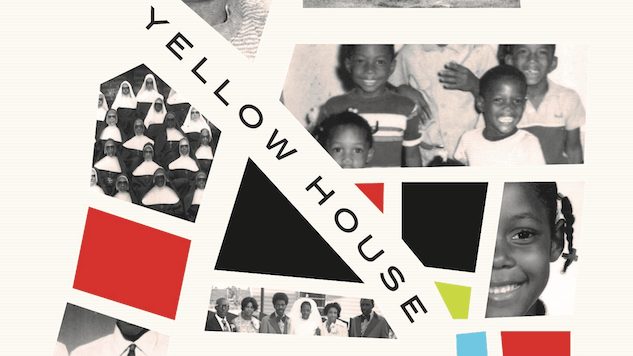Sarah M. Broom’s The Yellow House Is the New Orleans Story America’s Been Missing
Books Reviews sarah m. broom
For much of the country, New Orleans summons two narratives. One is a romantic story about Mardi Gras, the occult, the French Quarter—an exotic vision of the American South that draws tourists in droves. The other is the story of Hurricane Katrina—highlighting the abject failure to protect the vulnerable that begins in 2005 and continues through today. But in her debut book, The Yellow House, Sarah M. Broom uses her family’s history to carve out a new story for New Orleans. Her narrative insists many stories make up New Orleans, despite being rarely or never told.
The titular yellow house was bought by Broom’s mother, Ivory Mae, in 1961. Ivory Mae was 19 at the time and had recently become a widow; her first husband was hit by a car and killed in Fort Hood not long after enlisting. Along with her second husband, Simon Broom, Ivory Mae would raise 12 children in the house, a mixed group that included Simon’s three children, her own three from her first marriage and six of their own. The oldest, Simon Jr., was born in the 1940s; the youngest, Sarah, was born in 1979 just six months before her father passed away.
 The yellow house sat in New Orleans East, which was once a wilderness that became poised for development. But that development never quite came, and the neighborhood demographics shifted from majority white to majority black by the time Sarah was born. In 1965, Hurricane Betsy flooded the area so rapidly that residents had just 20 minutes to evacuate, despite later claims that the city could have alerted the public in time. The damage was immense, and promises were made that it would not happen again. Then Hurricane Katrina came in 2005. The yellow house, which had survived Hurricane Betsy, was torn down by the city in 2006 after it was deemed in “imminent danger of collapse.”
The yellow house sat in New Orleans East, which was once a wilderness that became poised for development. But that development never quite came, and the neighborhood demographics shifted from majority white to majority black by the time Sarah was born. In 1965, Hurricane Betsy flooded the area so rapidly that residents had just 20 minutes to evacuate, despite later claims that the city could have alerted the public in time. The damage was immense, and promises were made that it would not happen again. Then Hurricane Katrina came in 2005. The yellow house, which had survived Hurricane Betsy, was torn down by the city in 2006 after it was deemed in “imminent danger of collapse.”
To tell the story of the yellow house and its inhabitants, Broom weaves memoir and reportage on her own family, having interviewed many of her extended and immediate family members and quoting them at length. She reaches back to her great-grandmother and her grandmother, Lolo, before settling in to tell the story of her mother, father and siblings. With the yellow house at its center, Broom and her siblings’ childhoods read like any other rollicking family story—the adventures, the punishments, the parents working hard to make ends meet and provide a loving home. Loss is inescapable, but the earliest parts of the book are defined by the fullness Broom evokes rather than absence.
That changes with Hurricane Katrina. The home is destroyed, the family is displaced and the wrongs committed against New Orleans’ black residents come into sharper view. Broom is explicit in the ways colorism and racism shaped her family’s experiences—and by extension, the experiences of others in New Orleans East and beyond. But in the absence of the yellow house, the potential for systemic injustices to do harm on a personal level appears more acute.
The Yellow House is a history of New Orleans as seen through one ordinary (amazing, funny and loving) family. Broom and her family’s powerful voices tell a story far removed from how popular culture views New Orleans, putting a finer point on Hurricane Katrina’s aftermath. In doing so, Broom cuts through what has become a well-known narrative and replaces rote fact with a human saga.
Bridey Heing is a freelance writer based in Washington, DC. More of her work can be found here.